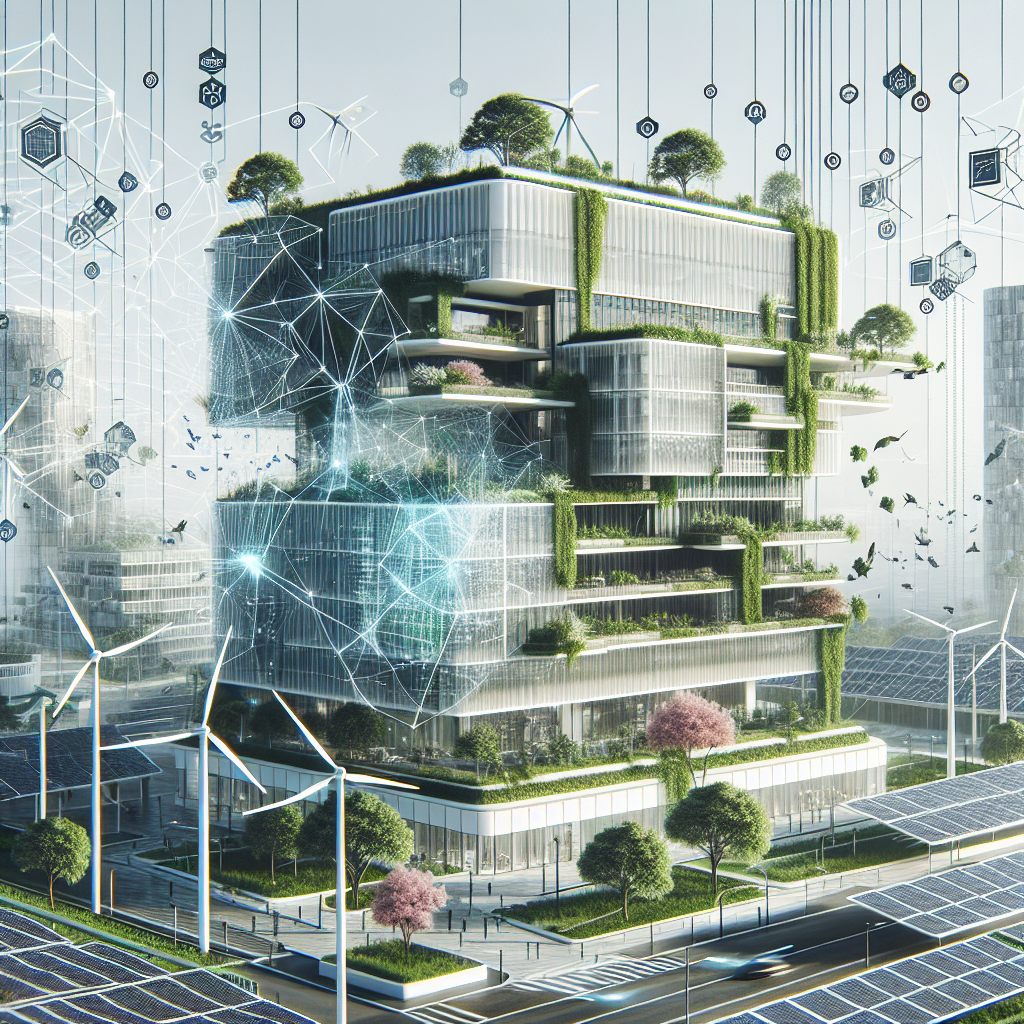In recent years, there has been a growing interest in the role of artificial intelligence (AI) in sustainable architecture. AI has the potential to revolutionize the way we design and build buildings, making them more energy-efficient, environmentally friendly, and cost-effective. In this article, we will explore the various ways in which AI is being used in sustainable architecture and the benefits it can bring to the industry.
One of the key areas where AI is making a significant impact in sustainable architecture is in building design. AI algorithms can analyze vast amounts of data to optimize building designs for energy efficiency, daylighting, and thermal comfort. By simulating different design scenarios, AI can help architects and engineers identify the most sustainable solutions for a given project.
For example, AI-powered software can analyze a building’s orientation, shape, and materials to determine the most efficient passive design strategies, such as natural ventilation and daylighting. This can help reduce the building’s energy consumption and carbon footprint, while also improving occupant comfort and well-being.
AI can also be used to optimize building systems, such as heating, ventilation, and air conditioning (HVAC) systems. By analyzing real-time data from sensors and building management systems, AI algorithms can adjust HVAC settings to minimize energy use while maintaining indoor comfort levels. This can result in significant energy savings and reduced greenhouse gas emissions.
In addition to building design and systems optimization, AI is also being used to improve construction processes. Construction is a notoriously wasteful industry, with high levels of material waste and inefficiency. AI can help address these issues by optimizing construction schedules, reducing material waste, and improving project management.
For example, AI-powered construction scheduling software can analyze project timelines, resource availability, and weather conditions to optimize construction schedules and reduce delays. This can help projects stay on track and on budget, while also minimizing the environmental impact of construction activities.
AI can also be used to monitor building performance and identify opportunities for improvement. By analyzing data from sensors, meters, and other building systems, AI algorithms can detect patterns and trends in energy use, occupant behavior, and environmental conditions. This can help building owners and operators identify opportunities to reduce energy consumption, improve indoor air quality, and enhance occupant comfort.
Overall, the role of AI in sustainable architecture is significant and promising. By leveraging AI technologies, architects, engineers, and building professionals can design and construct buildings that are more energy-efficient, environmentally friendly, and cost-effective. This can help address the urgent challenges of climate change and resource depletion, while also improving the quality of the built environment for current and future generations.
FAQs:
Q: How is AI being used in sustainable architecture?
A: AI is being used in sustainable architecture to optimize building design, systems operation, construction processes, and building performance monitoring. AI algorithms can analyze data to identify the most sustainable design solutions, optimize building systems for energy efficiency, reduce construction waste, and improve building performance over time.
Q: What are the benefits of using AI in sustainable architecture?
A: The benefits of using AI in sustainable architecture include improved energy efficiency, reduced environmental impact, cost savings, enhanced occupant comfort, and better building performance. AI can help architects and engineers design and construct buildings that are more sustainable, resilient, and responsive to changing environmental conditions.
Q: Are there any challenges associated with using AI in sustainable architecture?
A: Some of the challenges associated with using AI in sustainable architecture include data privacy and security concerns, the need for specialized skills and training, and the potential for bias in AI algorithms. It is important for architects, engineers, and building professionals to carefully consider these challenges and address them when implementing AI technologies in sustainable architecture projects.
Q: How can I learn more about AI in sustainable architecture?
A: There are many resources available for learning more about AI in sustainable architecture, including online courses, webinars, conferences, and research papers. Additionally, collaborating with experts in the field and participating in industry events can help you stay informed about the latest developments and best practices in using AI for sustainable architecture.

